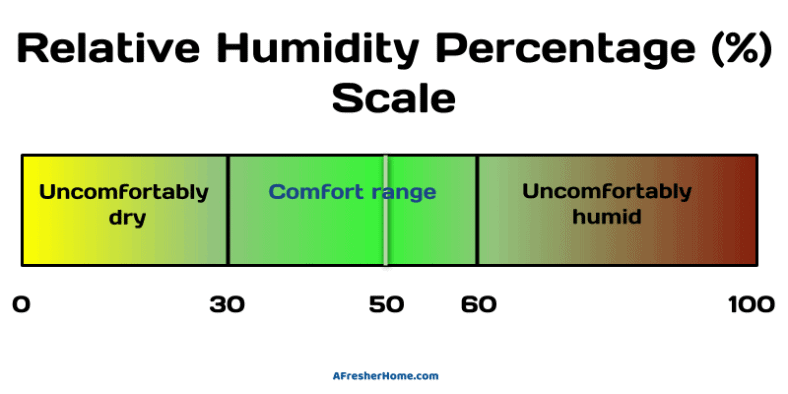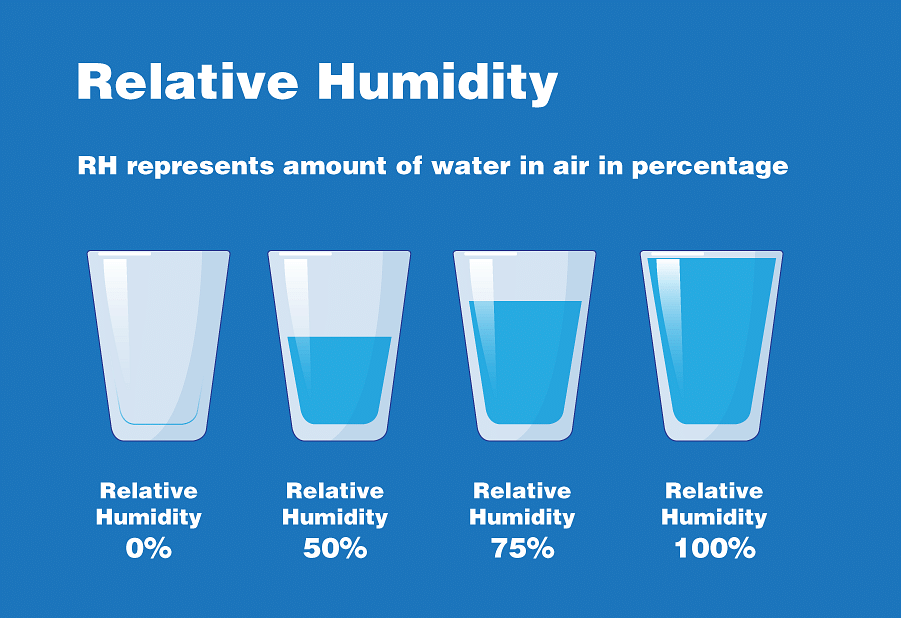Table Of Content
- What Is the Ideal Humidity Level for Your House?
- What are the signs of high humidity in a house?
- Relative Humidity Chart
- Solved! Why Is My House So Cold?
- Bottom Line: Should You Need To Adjust Your Home’s Humidity Level?
- How do you measure humidity in a house?
- What is the ideal level of humidity to keep your house comfortable?

Environmental Protection Agency (EPA), the ideal indoor relative humidity is between 30% and 50% — and must be kept below 60%. Low indoor humidity means that your house’s humidity level is below 30%. Colder weather in the winter months can lead to a drop in humidity levels. When it enters your home, your heating system warms it up and removes even more moisture.
What Is the Ideal Humidity Level for Your House?
We have grilled the experts on the subject to discover not only what the optimal humidity levels in your house should be, but also how you can achieve them. The soil outdoors may not be the first thing that comes to mind when homeowners wonder “Why is it so humid in my house? ” However, humidity can come up through the soil underneath the foundation of the home. This is called rising damp, and ineffective grading can be a significant factor since groundwater and rain can accumulate in a home’s foundation.
What are the signs of high humidity in a house?
Summer heat can cause high humidity levels in your home, but reduced ventilation, leaks, poor insulation, and everyday activities—such as cooking and showering—can also generate excess moisture. To lower your home’s humidity level, you need to reduce the amount of moisture in the air. A whole-house dehumidifier is likely the best way to accomplish this task if you regularly battle high indoor humidity. You’ll also want to change the filter in your heating and air conditioner system as recommended (usually every days) and have the unit inspected each year for needed maintenance. Beyond installing an effective humidifier, you might want to invest in an Energy Recovery Ventilator.
Relative Humidity Chart
However, exceeding 60% can lead to issues such as mold growth and respiratory problems. As most people are aware, high levels of dampness and humidity can supply enough moisture to facilitate mold growth. Asthma is an incredibly common condition that makes it difficult to breathe. The Harvard Review found that 21%3 of the 21.8 million cases of asthma annually are attributable to residential dampness and mold.
Solved! Why Is My House So Cold?
When it comes to your home, overly humid air creates a breeding ground for mold and mildew, which results in costly damage. Over time, high humidity levels can cause wood to rot and attract unwanted insects. Too much humidity also causes swelling in furniture and other items, causing them to warp.
Try These Expert-Approved Ways to Humidify Your Home and Combat Brutal Winter Air - CNET
Try These Expert-Approved Ways to Humidify Your Home and Combat Brutal Winter Air.
Posted: Wed, 08 Mar 2023 08:00:00 GMT [source]
You may also have lower indoor humidity in the summer if you live in a drier climate and run your air conditioner often because air conditioners remove moisture from the air. If your home is only a few decades old, you likely have a kitchen hood vent fan and at least one bathroom or utility room exhaust fan. Running these fans will exhaust stale and humid air from your home and draw in fresh air from outside.
You could also pick up a hygrometer, an inexpensive device that helps measure moisture levels in your air at home, so you have the right information to make possible adjustments. Understanding humidity in your home can give you a picture of where you may have opportunities to make your place more energy efficient, Dixon points out. Once you’re armed with the right information, you can take steps to improve your whole home. Just like being too warm or too cold, having a humidity level in your home that’s too high or too low can have an impact on how you feel. It can cause chapped lips, staticky hair and clothes, and even occasional nosebleeds.

What is the ideal level of humidity to keep your house comfortable?
” the EPA offers recommendations on indoor humidity levels relative to outdoor temperatures for reference. Remember that in the summertime the air will naturally be humid, so you can safely store away the humidifier for those dry winter months. Keeping your home at the perfect humidity level is going to do wonders for your family’s comfort. Consequently, keeping an ideal home humidity level is also crucial to the health of your home and its structure.

Having old insulation replaced, especially in the attic and basement, could be the key to eliminating excess moisture in the air. If it isn’t possible to completely replace the home’s insulation, caulking or sealing windows throughout the home can be another effective way to restore the home to a more ideal inside humidity level. Keeping areas ventilated by opening a window or installing an exhaust fan can lower humidity inside the house. A professional can direct certain appliances, such as clothes dryers and stoves, to vent outside of the home. A whole-house dehumidifier costs $1,500 on average and can also help eliminate some of the moisture created by these activities.
Insufficient humidity can also make you feel colder, tempting you to turn the thermostat higher than necessary — and leading to a higher heating bill. If you have a problem with humidity in your home, it is best to resolve the issue rather than relying on fans. A fan can play an important role and help mitigate some excess moisture effects, but ultimately you should consider a more permanent solution. All that’s required is minutes of fresh air from several open windows, so you get a ‘through-draft’, and you’re done.
Here's The Definitive Best Humidity Level For Sleeping - Sleepopolis
Here's The Definitive Best Humidity Level For Sleeping.
Posted: Wed, 26 Apr 2023 07:00:00 GMT [source]
As a professional HVAC technician, I stress the importance of having a solid indoor air quality strategy with a strong emphasis on humidity control. Maintaining ideal indoor humidity levels is essential for comfort, health, and safety. Your HVAC system plays a crucial role in humidity control, so your professional heating and air conditioning service provider is an excellent resource for help. High humidity levels can cause discomfort and health issues, and excessive humidity can even cause damage in a home. Some telltale signs of excess moisture include an AC system that smells musty, a humid feeling in the house, or visible mold and mildew growth.
You may find research that suggests the 30–50% range is ideal for indoor spaces. That is primarily considered an outdated suggestion, thanks to current research. Outside of this range, your air and your body are more susceptible to airborne pollutants such as allergens, mold, mildew, and viruses. The easiest and most efficient way to do thisis to use windows, bathroom fans or ceiling fans.
Commonly controlled by an indoor humidistat, whole-house humidifiers will add moisture to the air until it reaches the relative humidity percentage of your choosing. Whole-house humidifier installation costs vary based on several factors, but the national average is around $2,250. Typically, homeowners can expect to spend between $900 and $3,600 on a professional whole-house humidifier installation.
The following table shows the ideal level of humidity to achieve in your home based on specific circumstances. Simple fixes around the home can help to improve humidity levels that are below the recommended 30%. Quick fixes like those we have listed below can often help manage your humidity levels. However you must first be sure that there is not a larger underlying issue such as pipe leaks, or subpar insulation in key areas. Successful ventilation inside of your home will help create a relatively constant humidity level that adheres to recommendations, you just need to monitor the levels to make sure.

No comments:
Post a Comment